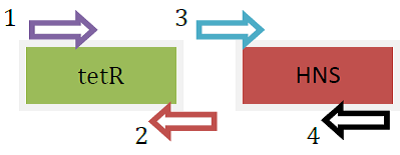Team:HKU-Hong Kong/Lab Diaries
From 2011.igem.org
(Difference between revisions)
| Line 35: | Line 35: | ||
<LI>tetR: [forward] R-H-out-F; [reverse] R-H-tetR-R | <LI>tetR: [forward] R-H-out-F; [reverse] R-H-tetR-R | ||
<LI>HNS (FL): [forward] R-H-tetR-F-out; [reverse] R-H(FL)-2-R | <LI>HNS (FL): [forward] R-H-tetR-F-out; [reverse] R-H(FL)-2-R | ||
| - | |||
| - | |||
| - | |||
| - | |||
| - | |||
| - | |||
<div ALIGN=CENTER> | <div ALIGN=CENTER> | ||
{| style="width:254px;background:#99EE63;text-align:center;font-family: georgia, helvetica, arial, sans-serif;color:#000000;margin- top:5px;padding: 2px;" cellspacing="5"; | {| style="width:254px;background:#99EE63;text-align:center;font-family: georgia, helvetica, arial, sans-serif;color:#000000;margin- top:5px;padding: 2px;" cellspacing="5"; | ||
| Line 49: | Line 43: | ||
|} | |} | ||
</div> | </div> | ||
| + | </OL> | ||
| + | <LI>Another PCR was carried out using primers with linker to insert the linker DNA to the tetR and HNS (FL) for the fusion of the 2 genes. | ||
| + | <LI>PCR was used to further amplify the product from step 2 (fusion protein gene) | ||
| + | </OL> | ||
Revision as of 17:05, 4 October 2011
| Lab Diaries | |
| Week 1
Transformation of reporter DNA (pEGFP-loxp-km-loxp) into DH10B (non-virulent strain E. coli) with antibiotic resistance (Chloramphenicol – Cm) | Lab Diaries |
Week 2
| Lab Diaries |
Week 3
|
 "
"



